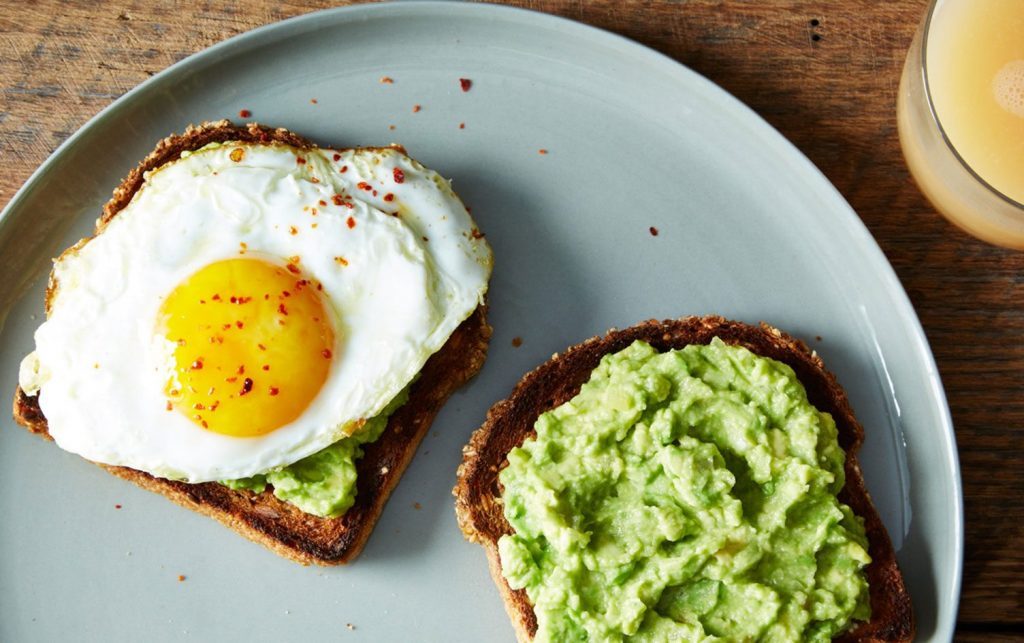
Anyone who’s been around long enough remembers the days when eating fat — any kind of fat — was bad, period. It all started when Ancel Keys published a now famous study out of the University of Minnesota in the 1950s linking fat to heart disease. “Of course Keys’ study had some flaws. It linked saturated fat to heart disease, a connection that has been re-studied, and we now know isn’t as clear as it seemed,” says Doug Mashek, a professor at the University of Minnesota. The problem that stemmed from Keys’ study was that, rather than deciphering between good and bad fat, people simply demonized all fat and avoided it altogether. This meant leaving out the kinds of fat that we now know are good for you and central to a healthy, nutritious diet.
“As a result of the connections [Keys] made, we went through a low-fat phase of diet recommendations, which, in retrospect, was bad,” Mashek explains. “In any diet, when you take something out, you have to replace it with something else.” So most people just shied away from all fat in general and began replacing fat with refined carbohydrates. Avocados and nuts became bad. Olive oil became bad. The food industry exploded with low fat products that were highly processed and white-flour based.
That said, not everything that came from that study was bad. “I think he had good intentions, and he was pioneering in so many ways. The positive thing that came out of his work was the spotlight it put on the Mediterranean diet, namely olive oil,” Mashek says. As we now know, olive oil and fish, the staples of a Mediterranean diet, are both great sources of healthy fats.
SHEDDING LIGHT ON FAT
Despite scientific revelations, most people still aren’t sure exactly how to manage fat, and it makes sense because there’s a lot to consider: poly-, mono-, hydrogenated, good fat, bad fat and the list goes on. What it boils down to is this:
FATS TO FOCUS ON
Unsaturated, mono- and polyunsaturated fats (particularly those containing omega-3s). Found in vegetable oils, nuts, avocados, and fish.
FATS TO LIMITS
Saturated fats (found in meat and dairy products) and artificial trans fatty acids that hide in anything containing hydrogenated or partially hydrogenated oils, found in packaged foods and anything fried.
FATS TO WATCH
Coconut oil, palm oil and palm kernel oil (the so-called tropical oils) are all plant-based fats that contain high concentrations of saturated fat. Palm oil and palm kernel oils are used in many processed foods that tend to be high in calories, sugar, salt and refined carbohydrates. When it comes to plant-based fats, choose those that are naturally liquid at room temperature like olive, sesame and other nut-based oils.
However, even though the food-science community now knows that animal fat isn’t great for you, it’s not as much of a villain as it was once painted to be. “It’s still recommended, and I agree, that it’s best to choose olive oil and fish, but if you have a piece of meat it isn’t going to kill you,” Mashek says. “It’s about creating and maintaining eating patterns and a healthy lifestyle that focuses on fruit and vegetables and whole-grains rather than elimination.”
WHERE TO START
Now to put this knowledge into action. If you’re inching your way toward fitness goals or have weight loss on your mind, when it comes to integrating good fat into your eating plan, Megan Morris, a certified clinical nutritionist at Prescribe Nutrition, cannot stress personalization enough. “Everyone is different, so no one diet works for everyone because it really depends on your unique metabolic profile,” she notes.
While figuring out your specific needs is paramount, according to Morris, the way to make sure you’re getting the right amount of healthy fat in your diet is to take a whole-foods based approach and focus on the right balance of macros (fat, protein, carbs). “The one place that most people can start is with a whole-foods diet. Eliminate hydrogenated oils and make sure there’s about 20 grams of protein at every meal,” she explains. Additionally, Morris offers a few more tips and tricks:
GOOD FATS ARE FOUND IN NATURE, NOT MADE IN A LAB
Morris explains that the best rule of thumb for getting healthy fat into your diet and avoiding the bad kind is to focus on sources that are natural and not processed — think: butter or olive oil, not margarine.
GO FOR NUTS AND SEEDS
“A lot of good dietary fat comes from nuts and seeds, so opt for nut and seed butter,” she notes. The important thing to note nere is to opt for the unsweetened kinds, otherwise sugar creeps in and detracts from the healthiness of the fats by tossing unnecessary carbs into the mix.
ANIMAL FAT IN MODERATION
“You can still have animal fats from time to time, just try not to rely on them. Try for things like avocados, olives, olive oil and unrefined coconut oils instead,” Morris concludes.
The post The Complicated History of Fat appeared first on Under Armour.
(via MyFitnessPal Blog)
